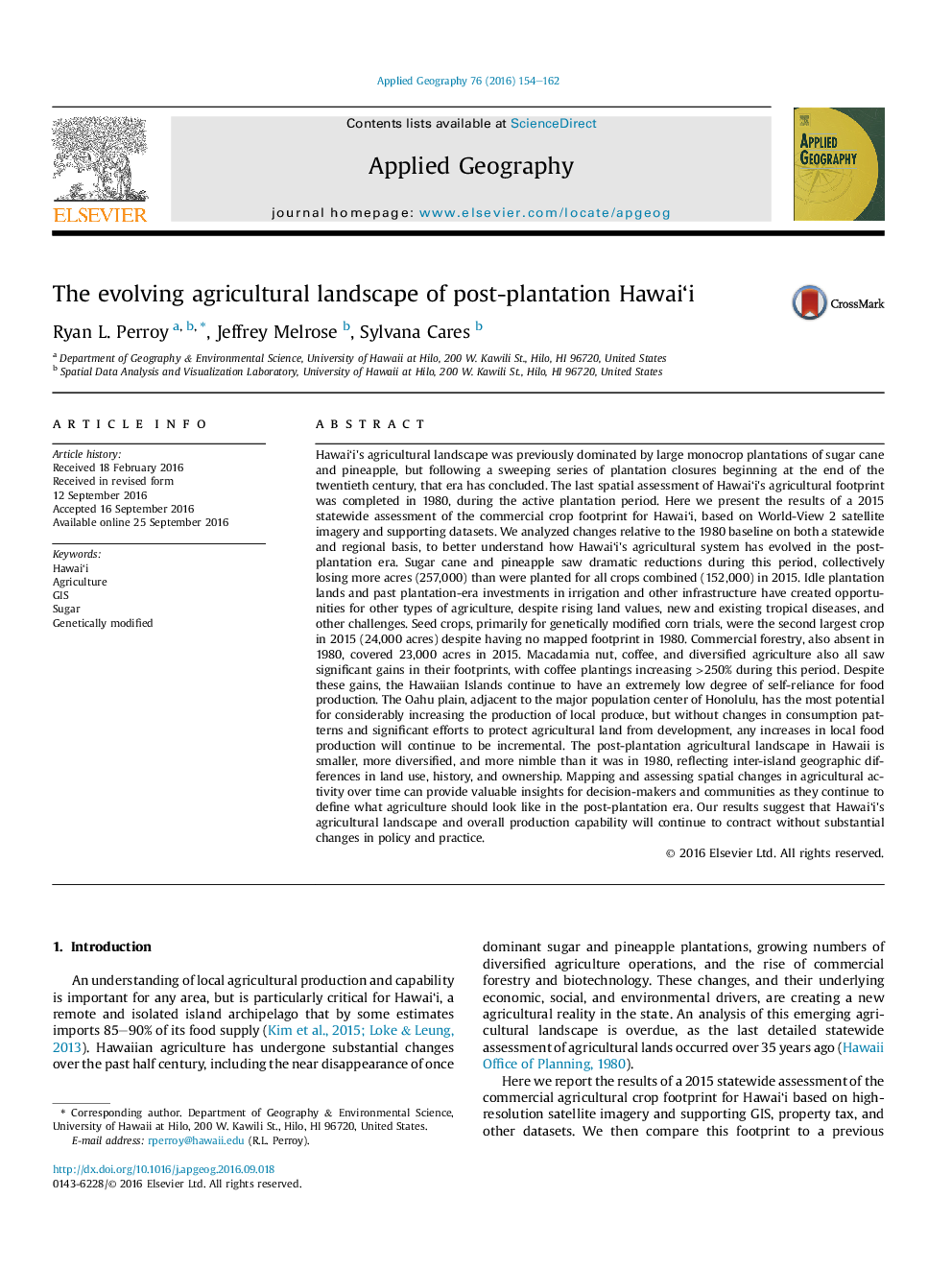| کد مقاله | کد نشریه | سال انتشار | مقاله انگلیسی | نسخه تمام متن |
|---|---|---|---|---|
| 6458548 | 1421041 | 2016 | 9 صفحه PDF | دانلود رایگان |

- Hawai'i's agricultural footprint has changed dramatically over the past 35 years.
- Large monocrop plantations have given way to smaller diversified operations.
- Increases in GM seed and export crops do little to address food security issues.
- The central O'ahu plain is critical for bringing local produce to market.
- Rising land values and other obstacles threaten future agricultural viability.
Hawai'i's agricultural landscape was previously dominated by large monocrop plantations of sugar cane and pineapple, but following a sweeping series of plantation closures beginning at the end of the twentieth century, that era has concluded. The last spatial assessment of Hawai'i's agricultural footprint was completed in 1980, during the active plantation period. Here we present the results of a 2015 statewide assessment of the commercial crop footprint for Hawai'i, based on World-View 2 satellite imagery and supporting datasets. We analyzed changes relative to the 1980 baseline on both a statewide and regional basis, to better understand how Hawai'i's agricultural system has evolved in the post-plantation era. Sugar cane and pineapple saw dramatic reductions during this period, collectively losing more acres (257,000) than were planted for all crops combined (152,000) in 2015. Idle plantation lands and past plantation-era investments in irrigation and other infrastructure have created opportunities for other types of agriculture, despite rising land values, new and existing tropical diseases, and other challenges. Seed crops, primarily for genetically modified corn trials, were the second largest crop in 2015 (24,000 acres) despite having no mapped footprint in 1980. Commercial forestry, also absent in 1980, covered 23,000 acres in 2015. Macadamia nut, coffee, and diversified agriculture also all saw significant gains in their footprints, with coffee plantings increasing >250% during this period. Despite these gains, the Hawaiian Islands continue to have an extremely low degree of self-reliance for food production. The Oahu plain, adjacent to the major population center of Honolulu, has the most potential for considerably increasing the production of local produce, but without changes in consumption patterns and significant efforts to protect agricultural land from development, any increases in local food production will continue to be incremental. The post-plantation agricultural landscape in Hawaii is smaller, more diversified, and more nimble than it was in 1980, reflecting inter-island geographic differences in land use, history, and ownership. Mapping and assessing spatial changes in agricultural activity over time can provide valuable insights for decision-makers and communities as they continue to define what agriculture should look like in the post-plantation era. Our results suggest that Hawai'i's agricultural landscape and overall production capability will continue to contract without substantial changes in policy and practice.
Journal: Applied Geography - Volume 76, November 2016, Pages 154-162